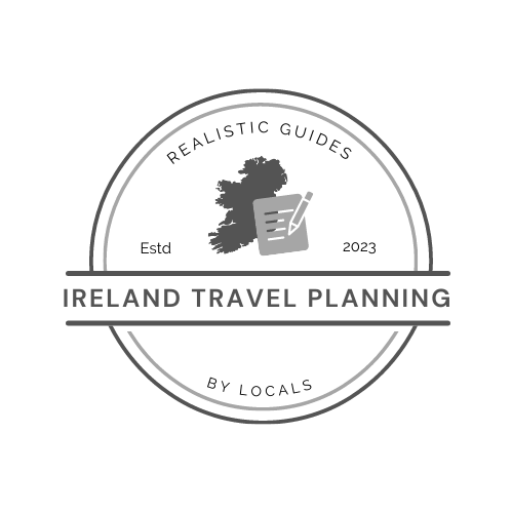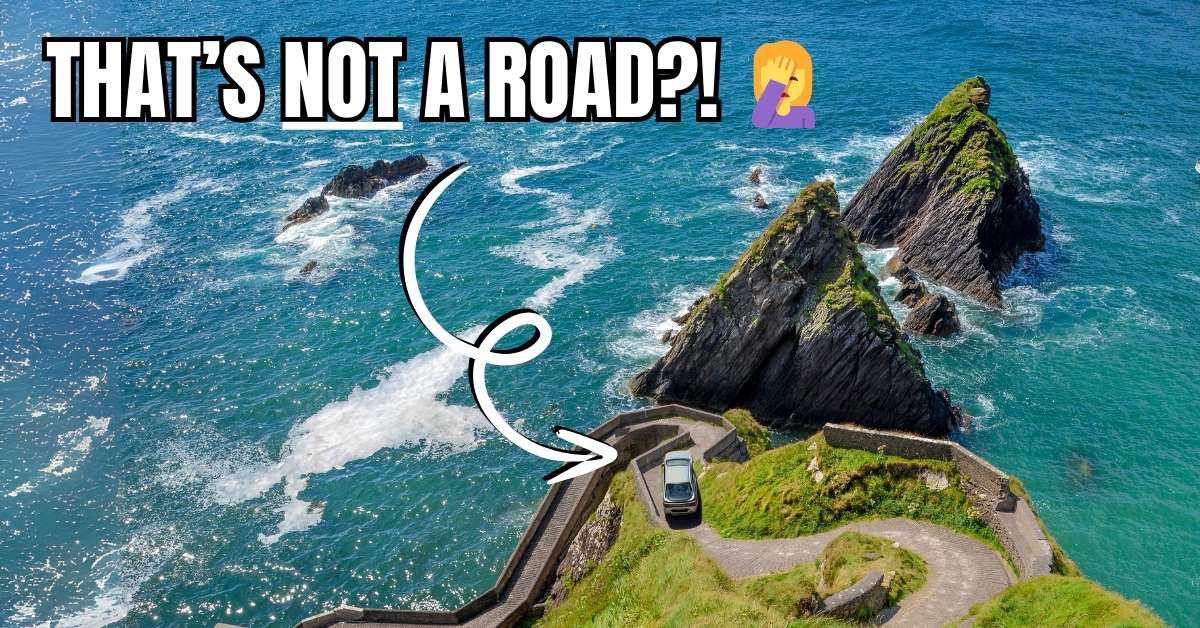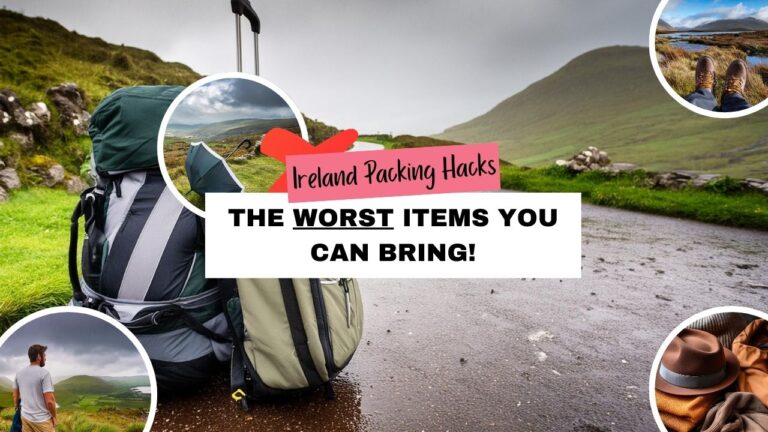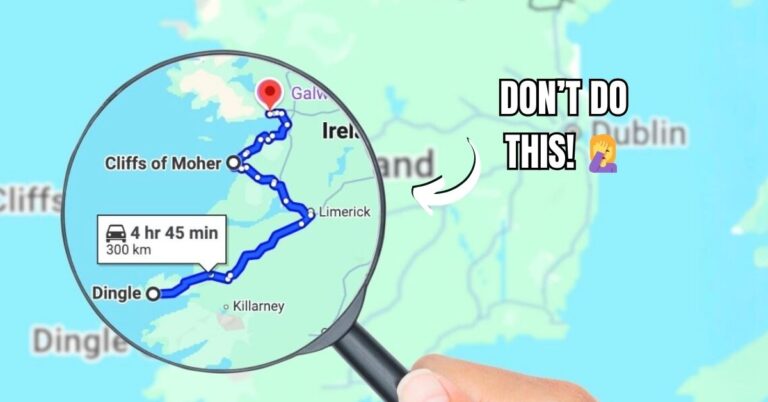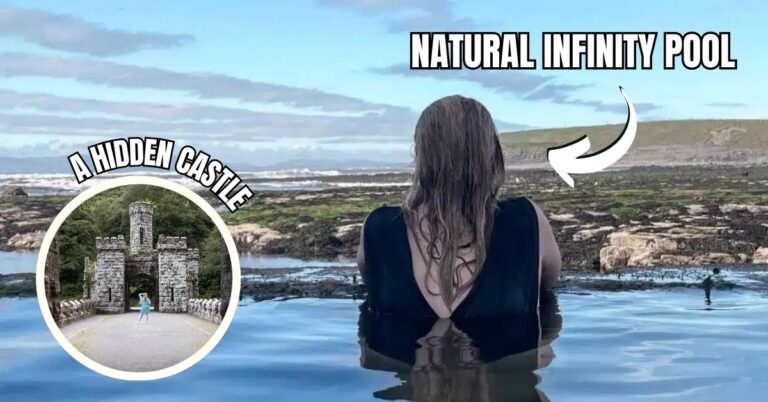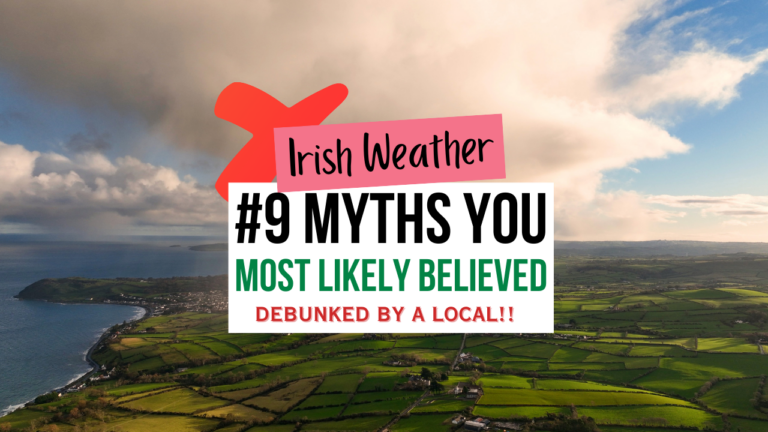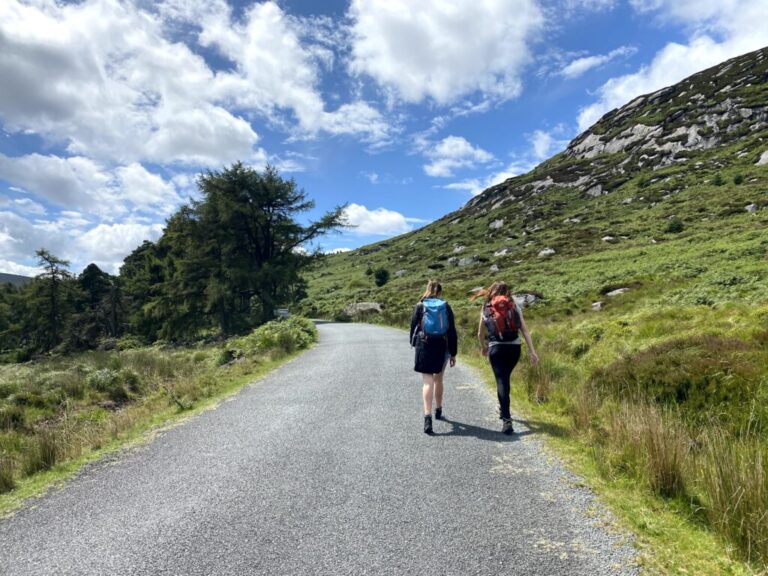Avoid These Rookie Mistakes When Driving in Ireland – (#29 Will Shock You!)
Ireland Travel Planning contains affiliate links and is a member of the Amazon Services LLC Associates Program. If you make a purchase using one of these links, I may receive compensation at no extra cost to you. See my Disclosure Policy for more information. Ireland Travel Planning also uses both personal and paid stock photos to illustate posts
One thing I get asked time and time again by tourists planning a trip to Ireland is…
Is it REALLY as hard to drive on the Irish roads as everyone says?
And honestly I don’t think it is, but that is easy being said coming from a local like myself.
And don’t get me wrong, the Irish road system is far from a walk in the park…but I do think it is hyped up too be far more challenging that is actually is.
So, I decided to put together this guide. Full of insider knowledge on how you can best navigate driving in Ireland without feeling completely overwhelmed.
To start let’s take a look the primary things you should consider before jumping in the car.
Section 1: Car Rental Considerations
- Transmission: For the most part, Irish cars have a manual transmission. That is not to say you can not rent automatic cars but they do tend to be more on the pricy side with less availability. So, my first bit of advice is to book your car rental car in advance to avoid disappointment. On the bright side, renting a automatic car will reduce mental workload since driving on the left is already challenging as it is.
- Car Selection: Personally, as a first time driver in Ireland I would recommend renting a small to medium sized car. This will make the narrow country roads far easier to navigate.
- Insurance: It can be easy to opt into the cheapest insurance option possible when renting a car but I would double check what is actually included in your purchase. Often times things like windscreen cover, loss of keys and putting in the wrong fuel are typically not covered! And the last thing you would want is a high bill at the end of your trip thanks to a simple error.
4. Useful Add Ons: It’s common for rental companies to offer additional add ons to your rental. There are two things I would consider, the first would be a reversing or backup camera. It’s a great option for those needing to reserve back on a narrow country road to let another car pass by. The second thing is a built in screen or media player that will allow you to display the GPS. This is a much better option than having to rely on your phone for navigation.
5. Toil Boots: Unfortunately, toil roads are common in Ireland, particularly when driving anywhere from Dublin. For the most part the toils can be paid by either cash or card at the booth with the exclusion of the M50 toil bridge in Dublin.
This is NOT obvious AT ALL. It’s very easy to miss, but it is quite literally a scanner in the sky. And you have to pay for it within 24 hours of passing it or the charge will keep going you. You can pay via this website OR You can ask your rental comapny for a toil pass to avoid any mishaps.
6. Rental Holding Deposit: Most car rental companies in Ireland will ask for a €2000 holding deposit to be held on your card until you return the car in good condition. There is not really a way around this so it is something to be mindful of when planning your vacation.
Before you visit Ireland, here's some quick recommendations…
📞 International roaming can be expensive, honestly eSims are the way to go! Airalo offers some pretty affordable cell phone plans that work seamlessly across Ireland, this one is best for travel within the Republic of Ireland and these deals work in both the Republic and Northern Ireland.
🏨 Hotel prices can go up and down, I always like to compare pricing by using site such as Booking.com or Hotels.com
🚌 Actives and Experiences is what makes an Ireland trip that extra bit special! Like did you know you can design your own Claddagh Ring? (one of my favourites). I typically find the best experiences by using the likes of GetYourGuide or Viator.
🚘 Renting a car is one of the best ways to explore the beauty of Ireland, but the pricing can be very competitive, that's why it is always best to check out site like Discover Cars to compare rental prices.
✈️ You never know what airlines may be offering Ireland flight deals, they can go down by 100's in a day, I always like to turn on price tracker on Skyscanner so I never miss a deal!
🏥 I can't stress this enough but travel insurance is an absolute must! Thankfully SafetyWing have some pretty affordable plans.
Section 2: Types of roads when driving in Ireland
Ireland has it’s fair share of road types, these range from high speed Motorways (or highways as they are known as in the US) to EXTREMELY narrow country roads with grass growing in the middle of them.
We typically name our roads according to it’s driving conditions and limits.
- M = Motorway: Similar to US interstate highways with on and off ramps. The speed limits on these range from 100 to 120km per hour.
- N = National: National roads are generally used between cities and large towns when a motorways is not pressent. In most cases they easy to naviagte. They do give more of s ‘country’ feel to them but don’t tend to be overly windy compared to actual country roads. They are usually 100Km per hour.
- R = Regional Roads: These are far smaller than National roads and generally only have two lanes (one going in each direction). They can really vary in difficulty, some you may question if they are a one way system whereas others are nice, wide and open. They can be windy in places but manageable for most drivers.
- L = Local Roads: It’s rare that a tourist would end up on one of these roads but it does happen. Only because Google Maps insists that it is a ‘shorter’ route. When in reality no one, not even the locals are driving at the 80km speed limit on them. These roads are used as access to a house or property.
- A Pass or Gap = Scenic Driving Route Through the Mountains: Odds are you will come across these road terms more than once on your trip to Ireland. It typically refers to scenic driving routes that bring you up through the mountains. My favourites being, Connors Pass in Kerry, Do Lough Valley in Mayo and Sally’s Gap in Wicklow.
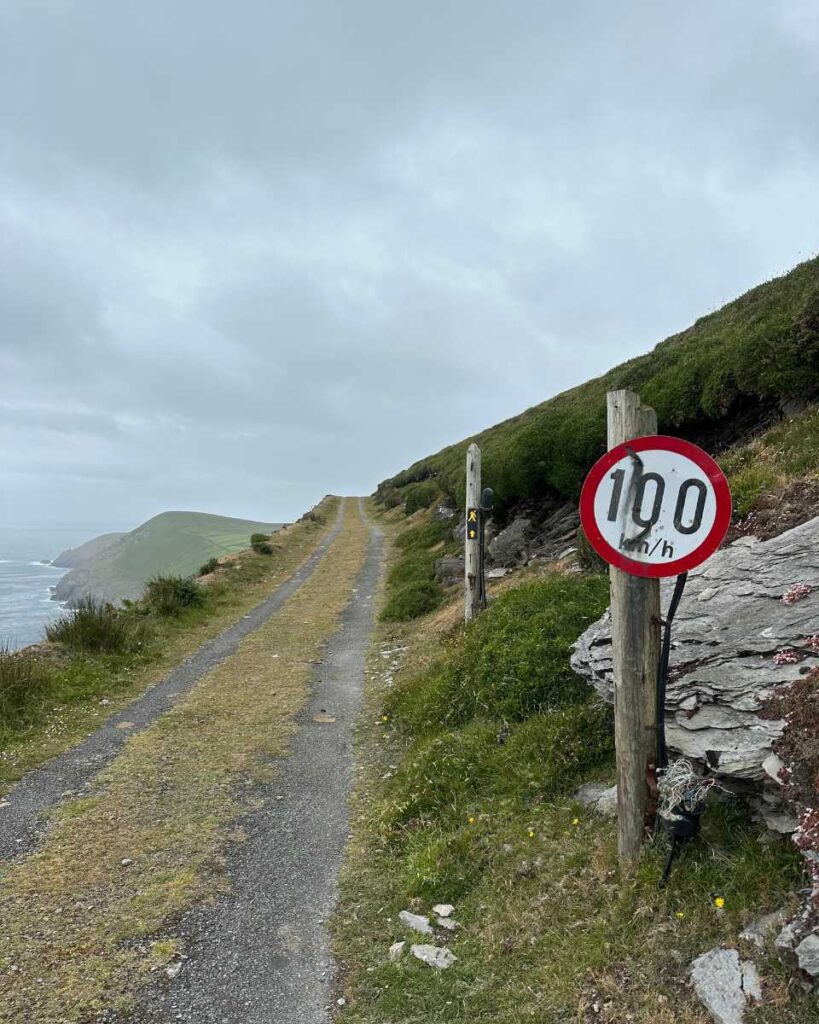
Section 3: How Speed Limits Work in Ireland
On the island of Ireland you have two speed measurements to be mindful of depending on where you intend to travel. In the Republic of Ireland the speed in calculated in Kilometres per hour and in Northern Ireland it is in miles.
Here’s a quick conversion (please note it is only estimates):
- 50 kph: ~32 mph
- 60 kph: ~36 mph
- 80 kph: ~48 mph
- 100 kph: ~62 mph
- 120 kph: ~75 mph
8. Driving Below Limit: It’s okay to drive below the posted limit, especially early in your trip. It’s important to get used to the car and feel safe while driving. If you choose to drive slower when on a Motorway it is important to stay in the lane closest to the left. If you want to drive slow on country/national roads please be considerate of locals behind you and pull in somewhere safe to let them pass.
9. Speed Camera’s in Ireland: It is common for your speed to be monitered while driving in Ireland. There are three main ways this is done, the first being by ‘mobile speed camera’s’. These are basically parked vans on the side of the road with a big camera image on the side of them. The second way is an average speed camera. These are places between two driving points and take into consideration your average speed getting from A to B. The are bright yellow in colour and there location is displayed well in advance. And finally, the Guards (the Irish police) can have speed guns in the there hands while parked. If you are driving over the speed limit you will get points and a driving offence.
Need with your Ireland trip? Let me be your guide…
🙋♀️ Travel Consultation
Book a 40 minute Ireland Travel Planning call with Laura your local guide to discuss some insider tips for your Ireland vacation!
🇮🇪 Free Resources
Explore my free resources packed with insider tips and expert knowledge to help you plan your trip to Ireland!
😘 Say Thank You
Finding my content helpful? A small tip would mean the world to me. It helps me to continue making these free guides 💛
Or, Join my FREE Ireland Travel Planning Facebook Group to ask questions about your upcoming trip! I pop in once a week to answer as manny as possible 🇮🇪
Need with your Ireland trip? Let me be your guide…
🙋♀️ Travel Consultation: Book a 40 minute Ireland Travel Planning call with Laura your local guide to discuss some insider tips for your Ireland vacation!
🇮🇪 Free Resources: Explore my free resources packed with insider tips and expert knowledge to help you plan your trip to Ireland!
😘 Say Thank You: Finding my content helpful? A small tip would mean the world to me. It helps me to continue making these free guides 💛
ℹ️ Join my FREE Ireland Travel Planning Facebook Group to ask questions about your upcoming trip! I pop in once a week to answer as manny as possible 🇮🇪
Section 4: Driving Tips
10. Navigation: Have one person navigate with Google Maps and another person drive. The navigator provides directions while the driver focuses on the road. This reduces the driver’s workload.
11. Driver Rotation: Ideally, have at least two drivers. Exhaustion from driving can lead to missing destinations or unsafe driving.
12. Single Direction Giver: Designate one person to give directions to avoid confusion. Others can speak up about imminent safety issues if needed.
13. Local Drivers: Irish drivers are used to the roads but still may take risks. It’s best not to copy something that seems wrong just because they’re doing it.
14. Look Right First: Always look right first when walking and driving.
15. Safe Driving Tip: If you're not used to driving on the left, follow a car in front of you for a few miles after picking up your rental car. This helps you get used to traffic flow before using your GPS.
16. Lane Positioning: Use your mirrors to stay centered in your lane. The roads can be narrow, so keeping an eye on your side mirrors helps avoid straying too close to the edge.
17. Markings: Lane markings are all white, regardless of traffic direction. Do not mistake them for one-way roads.
18. Bikes: Are common on all types of roads, including N, R, and L roads. Be mindful of their presence, they can be easy to miss and 9 times out of 10 if you hit a cyclist the driver is in the wrong.
19. Petrol Stations: Green means unleaded petrol; black is diesel. Petrol stations also offer ice cream, sandwiches, and snacks.
21. Don't turn on red: This is crucial to remember: in Ireland, you can’t turn left or right at a red light – no exceptions.
Unless there’s a specific sign allowing it, at times there will be a specific turning light for the more difficult junctions. If a turning light is not present, you wait for the main light to turn green and then drive into the turning box (at times can be faded) to allow cars going straight to pass. You then make a turn once all the oncoming traffic has passed. If you notice the light start to turn red, once you have passed into the box you are ok to proceed with the turn.
Section 5: Tips for Dealing with Roundabouts in Ireland
There are A LOT of roundabouts in Ireland, and if you are unfamilar with them it can be something that is hard to get your head around. So, below are some of my best tips.
22. Understand the Basics
- Priority: Vehicles already in the roundabout have priority. This means you must yield to traffic coming from your right.
- Approach: Slow down as you approach the roundabout. Look for the signs and road markings that indicate which exit you need to take.
23. Choose the Correct Lane
- Left Lane: If you are taking the first exit or if the roundabout is small and straightforward, use the left lane.
- Right Lane: If you are taking the second exit or beyond, you might need to use the right lane. Check the road signs or markings as you approach.
24. Signal Your Intentions
- Entering the Roundabout: Indicate left if you are taking the first exit. If you are going straight through only signal left as you are approaching your exit. When leaving at the last exist, signal right until you come to the last turn off and then signal left.
25. Use Your Mirrors
- Before Entering: Check your mirrors to ensure you are aware of traffic in both lanes and behind you.
- While in the Roundabout: Keep an eye on vehicles around you and be prepared to react if someone changes lanes or if there is unexpected behaviour.
26. Keep a Safe Distance
- Spacing: Maintain a safe distance from the vehicle in front of you. Roundabouts can become congested, and keeping space helps avoid collisions and allows for smoother navigation.
27. Be Mindful of Pedestrians and Cyclists
- Crossings: Watch out for pedestrian crossings and cycle lanes on and around the roundabout. Pedestrians and cyclists have the right of way at designated crossings.
28. Avoid Lane Changes Within the Roundabout
- Staying in Your Lane: Do not change lanes while you are in the roundabout. Pick your lane before entering and stick with it to avoid confusion and potential accidents.
279 Don’t Rush
- Patience: Take your time to ensure you’re in the correct lane and have assessed all traffic conditions. It’s better to be cautious than to make a sudden maneuver that could be dangerous.
Section 6: How to deal with ‘Irish’ traffic jams
In Ireland a perfectly good excuse for being late for something is ‘Sorry I was stuck behind a tractor’ or ‘There was a herd of sheep in the way’.
30. Tractor Tips: In general, tractors tend not to be able to drive at the speed limit. This can be extremely fustrating especially when you are stuck behind them on a winding road. However, you should NEVER overtake them on a bend. Wait until it is clear. Otherwise you could end up in a serious accident.
31. Sheep Jam’s
This one may come as a shock but one of the most common types of traffic jams in Ireland is caused by sheep.
9 times out of 10 the farmer is moving them and they’ll be out of your way in a few minutes.
However, if you do find sheep in the middle of the road for no reason it is ok to continue driving, just drive really slow until the move out of the way.
Section 7: Choosing Where to Stay Based on your Route.
32. Strategic Locations: To make the most of your trip, decide what you want to do and see in Ireland. Choose a few strategically located cities and stay there for a few days at a time. This helps minimize driving time and maximizes your sightseeing.
33. Avoid Driving in Dublin: With that being said, I do not advise driving in Dublin the city is really not set up for it with many weird rules like no right/left turns on certain streets and the parking costs a fortune.
34. Sites En Route: The best thing about driving is you can stop off along the way to a new destination. It’s a great way to discover hidden gems that you wouldn’t have otherwise came across if you where travelling Ireland as part of a tour group.
Have a Ireland Travel Question?
Then join my FREE Facebook Community, I pop in once a week to answer as many queries as possible. Please do not email or DM. It is easier for me to manage everything in the one place 😊
👋 JOIN MY FREE IRELAND FACEBOOK COMMUNITY
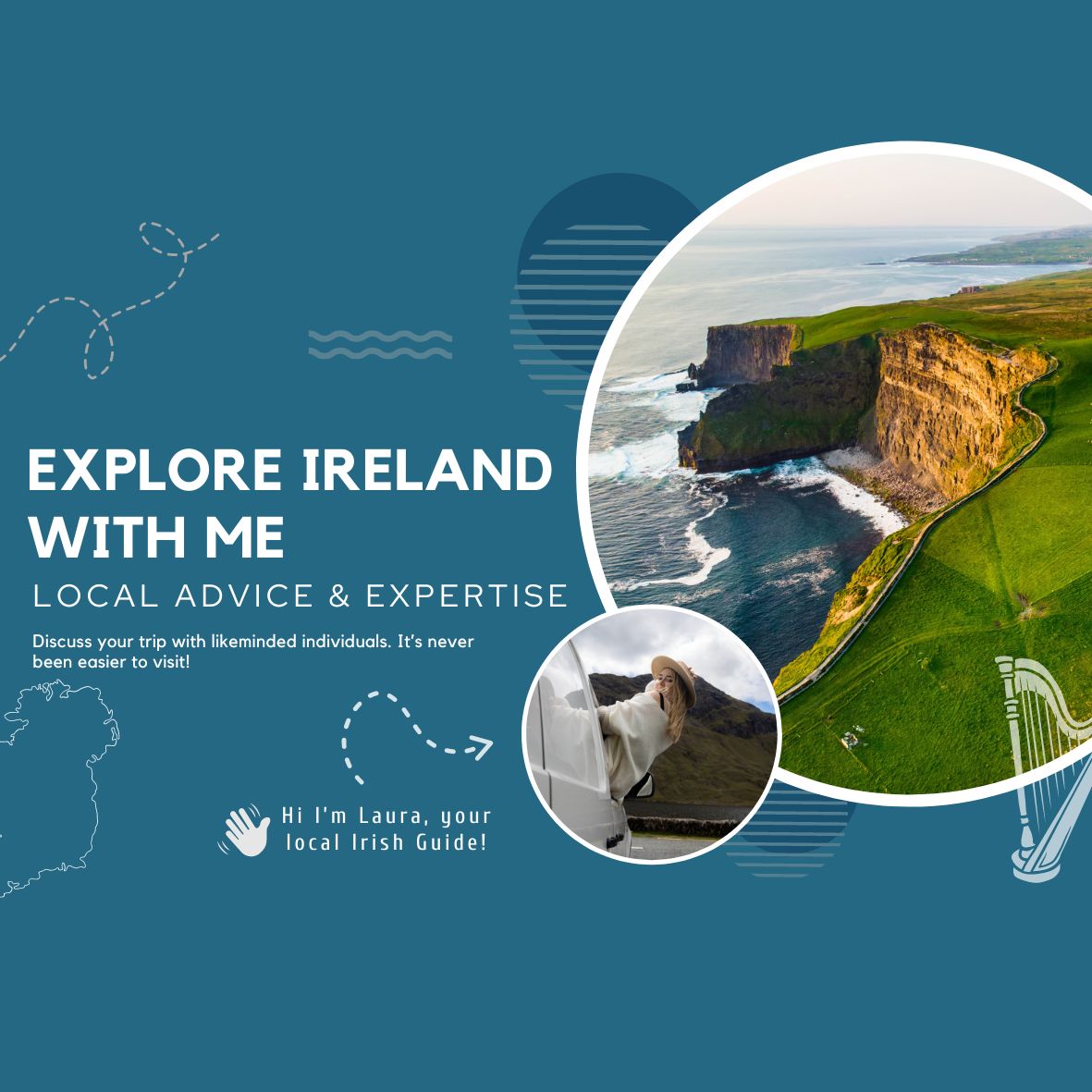
🇮🇪🇮🇪🇮🇪
FREE IRELAND FACEBOOK COMMUNITY
✔️ LOCAL ADVICE
✔️ FREE ACCESS TO GOOGLE MAPS PINS
✔️ GROUP DISCUSSION
